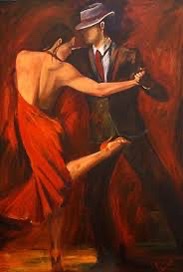Early Female Entertainers
Part 4
Latin America
In the mid-14th century, entertainment was a respected profession; South America’s female entertainers had equal social status with male dancers, and some music was reserved for women. Andean girls ages nine to fifteen who were beautiful and had “gifted” voices, particularly in a high range, were housed for musical and dance training by esteemed older women. Once proficient, the young women performed as soloists or alongside other women or men.
After Columbus’s arrival in 1492, European settlers, with their macho patriarchal ideologies, ravaged the indigenous culture. Music as a profession was denigrated, and native music was equated with savagery, whereas European music was of course considered civilized. The new Spanish songs described women as property—servants who had to please their men. Men became the entertainment authorities, music became male dominated, and women were no longer eligible for musical training. Despite a lack of endorsed training, women were allowed to sing and dance, but to play musical instruments or to compose was strictly male territory. Female dancers were more closely scrutinized if they danced in a suggestive way similar to that of their male counterparts; such women were considered “loose.”
As the conquerors imported Black slaves, an African influence followed. Catholic colonists also brought in nuns, holy and highly esteemed women who were encouraged to write, direct, and perform music in front of spectators, choirs, and high-ranking officials. During the nuns’ Christmas recitals, underprivileged women were allowed to perform. Other than a few casual pointers from the nuns, however, these women lacked training in dance and music.
Two hundred seventy years after Spain conquered Cuba, Great Britain, Spain, and the United States dominated the island successively for 140 years until it finally achieved independence in 1902. Despite Cuba’s legal sovereignty, the U.S., in addition to its brief military occupations, had a disproportionate influence on the Cuban people. The U.S. became the largest importer of Cuba’s sugar and tobacco, and many American tourists came from Florida, its southern tip just ninety miles away. Between 1915 and 1930, Havana hosted more visitors than any other place in the Caribbean. The liquor prohibition mandated by the Eighteenth Amendment to the U.S. Constitution in 1919 helped Cuba become America’s playground, which benefitted Cuban entertainers.
Born in 1877, Afro-Cuban Irene Herrera Laferté was first known for having inspired the late-19th-century guerrillas who fought for Cuban independence to sing their national anthem. In the 1930s, Cuba experienced a surge in the popularity of all-female bands in open-air cafés. Irene Herrera had spearheaded this movement in 1928 when she, along with her four daughters, formed the quintet La Charanga. Irene was called the Virtuoso of the Kettledrums, even though she also mastered the accordion, flute, and harmonica. In Herrera’s day, women didn’t go out alone, but Irene broke those conventional norms, which helped change patriarchal rules and customs. In 1970 she died at age ninety-three.
Born in 1895 just twenty-eight miles from Havana, Maria Teresa Vera began her singing and guitar-playing career in 1911. An outstanding example of the Cuban trova movement, she performed solo as well as with various male companions. Between 1916 and 1924 she and Rafael Zequeira—who died in 1924—made over a hundred recordings together in New York. In 1925, Maria Teresa formed the popular Sexteto Occidente along with five talented men. By 1935 she and Lorenzo Hierrezuelo became the duo Los Compadres.
During her twenty-seven-year partnership with Hierrezuelo, Maria Teresa was contracted to a radio program and appeared on TV. She composed the song Veinte años, which was performed by various Cuban entertainers and was often danced to. Though financially independent due to her own efforts, she rankled feminists with her “Rice Pudding” song, Arroz Con Leche, which conformed to the predominant attitude that a woman needed a spouse to take care of her. As an elder feminist, I remember that that was also my thinking—even for many years after I’d become financially secure. I considered myself anomalous, and I suspect Maria Teresa thought of herself similarly.
Upon her retirement in 1962, she received public tributes. Three years later, she died at age seventy. Forty-eight years younger than she, the famous Cuban exile singer-songwriter Pablo Milanés, known as Pablito, said, “Maria Teresa is for me the embodiment of Cuban song.” Canadian ethnomusicologist Lise Waxer, born in 1965, the same year that Maria Teresa died, considered her “the great-grandmother of all Latin women singers.”
Having been a tourist in both Cuba and Argentina, I have indelible memories of the hypnotic glamour of their tango music and dramatic dance movements.
Rosa Rodriguez Quiroga de Capiello, born 1896 in the poorer side of Buenos Aires, Argentina, became a leading tango singer after 1920. She recorded her first album in 1923, and was the first woman to debut on Argentinian radio. She eventually became a radio host, played the guitar, and recorded more songs. In Japan she performed in 1938 and 1970. Back in Argentina, she was credited in the 1976 film El canto cuenta su historia (“The song tells its story”). Rosa worked through age eighty-eight, and retired just days before her death in 1984.

